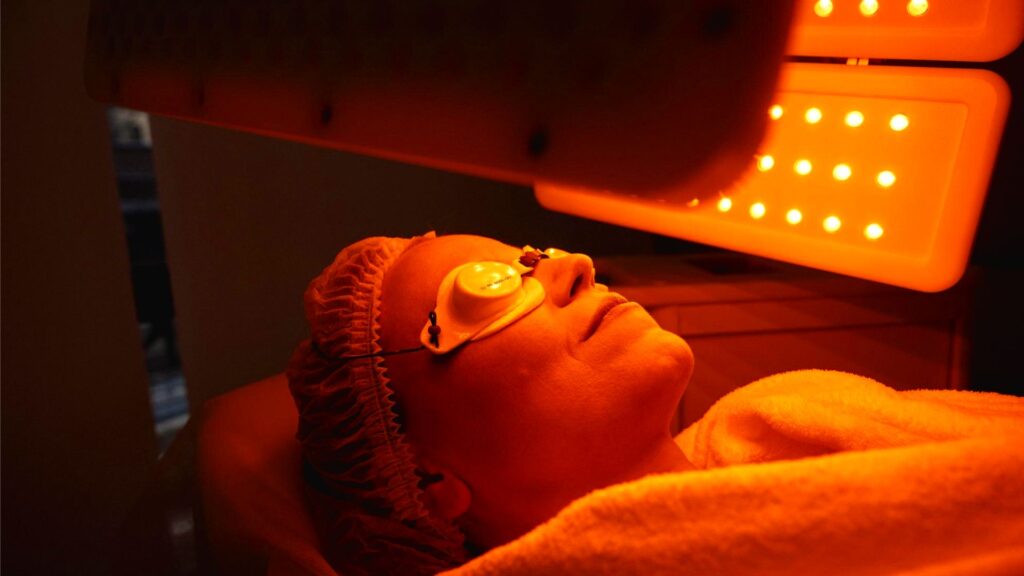Heart disease remains one of the leading causes of illness worldwide, making heart health a priority for many individuals and healthcare providers. In recent years, red light therapy has become a growing area of interest in both wellness and medical research. For heart patients, understanding whether it is safe is critical, given the sensitivity of cardiovascular health.
This article examines the science, benefits, and considerations of using red light therapy for those with cardiovascular concerns.
Understanding Light Therapy and How It Works
Red light therapy involves exposing the body to low-level wavelengths of red and near-infrared light. Unlike ultraviolet exposure, which can damage skin cells, red light penetrates tissues without causing harm.
The process, known as photobiomodulation, targets the mitochondria—often referred to as the powerhouse of the cell. When exposed to red and near-infrared light, mitochondria absorb the energy, enhancing the production of adenosine triphosphate (ATP). This activation can improve cellular repair, reduce inflammation, and support overall tissue health.
In professional wellness settings, devices like the Light LED Bed by INNERGY Dev are designed to deliver this therapy safely and effectively, offering a controlled way to bring these cellular benefits to clients.
Red Light Therapy and Cardiovascular Health
Cardiovascular health depends on efficient blood flow, strong cardiac function, and resilient blood vessels. It is believed that red light therapy may support this system by improving circulation and stimulating nitric oxide production. Nitric oxide promotes vasodilation, which helps reduce strain on the heart and improves oxygen delivery.
Evidence from several studies reinforces these findings. One study on cardiomyocytes found that near‑infrared light reduced cellular injury through nitric oxide pathways. Another preclinical trial on mice with heart failure demonstrated improved cardiac structure and higher ATP production, showing that light exposure helped reduce fibrosis and enhance energy synthesis in the heart muscle.
In addition, NIH‑supported research highlighted broader cardiovascular benefits of near‑infrared light, including improved heart performance and possible protection against reperfusion injury following cardiac events.

Potential Benefits of Red Light Therapy for Heart Health
The benefits of red light therapy are still being studied, but current findings highlight several promising areas:
- Improved blood flow: By stimulating nitric oxide release, red light therapy may support healthier circulation.
- Reduced inflammation: Inflammation in the cardiovascular system can worsen heart disease, and light therapy may help minimize these harmful effects.
- Enhanced myocardial function: Studies suggest that photobiomodulation may support recovery in the myocardium, the heart muscle itself, particularly after injury.
- Cellular repair: By stimulating mitochondrial function, light therapy encourages better repair and maintenance of cardiac cells.
These beneficial effects make red light therapy an area of interest for supporting cardiovascular health, though more large-scale clinical trials are needed to confirm long-term safety and effectiveness.
Safety Considerations for Heart Patients
While red light therapy shows promise, heart patients should approach it carefully. Evidence is still limited, with much of it drawn from animal models or small human studies. Under professional guidance, the therapy appears generally safe, but self-use without medical advice may pose risks. People with implanted cardiac devices like pacemakers should consult their cardiologist first, and those with advanced heart failure or recent heart attacks need personalized guidance before starting treatment.
Safety also depends on the wavelength, duration, and type of device—whether LED light, low-level laser therapy, or a red light therapy bed. Near-infrared light and low-level laser therapy are commonly applied in controlled settings, but incorrect use can reduce effectiveness or lead to unwanted side effects.
Final Thoughts from INNERGY Dev
Red light therapy offers promising potential in supporting cardiac function by improving circulation, reducing inflammation, and enhancing cellular repair. But individual risks vary depending on health conditions and treatment settings.
At INNERGY Dev, we specialize in manufacturing innovative wellness technologies like red light therapy beds. By focusing on evidence-based solutions, we provide resources that help wellness providers understand both the opportunities and limitations of emerging therapies. For those considering the use of red light therapy in supporting cardiovascular health, consultation with healthcare professionals remains the safest and most effective path forward.

